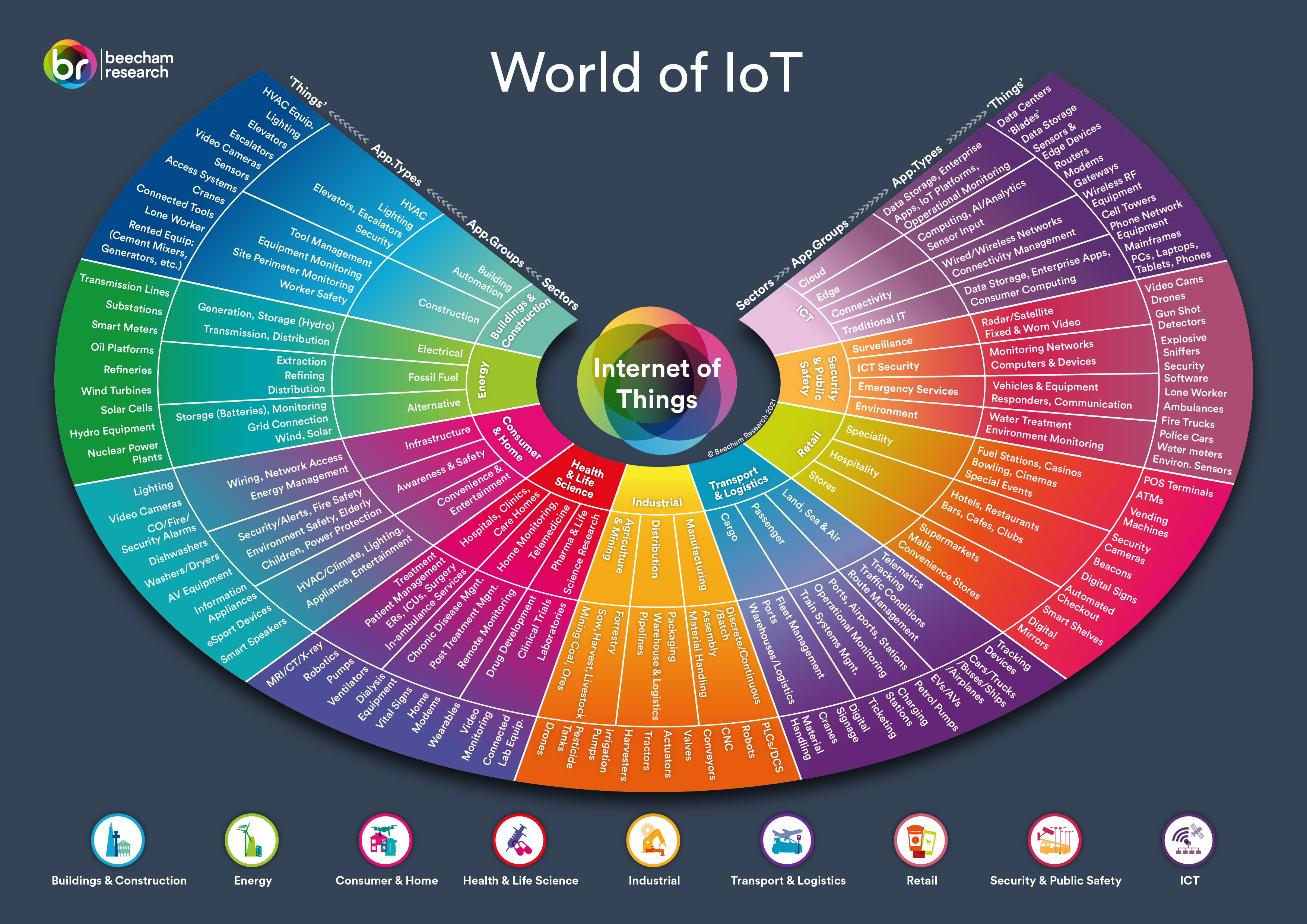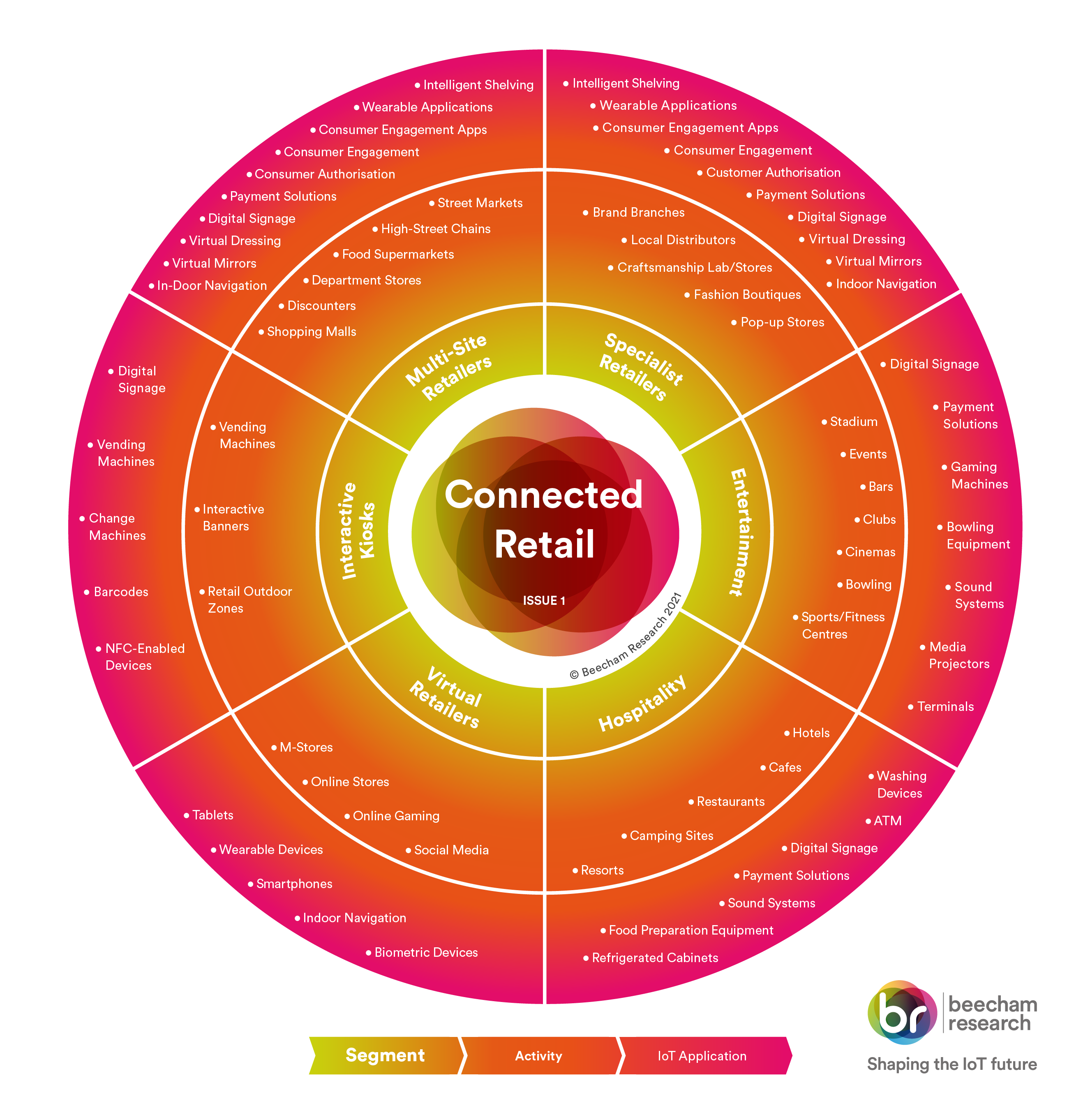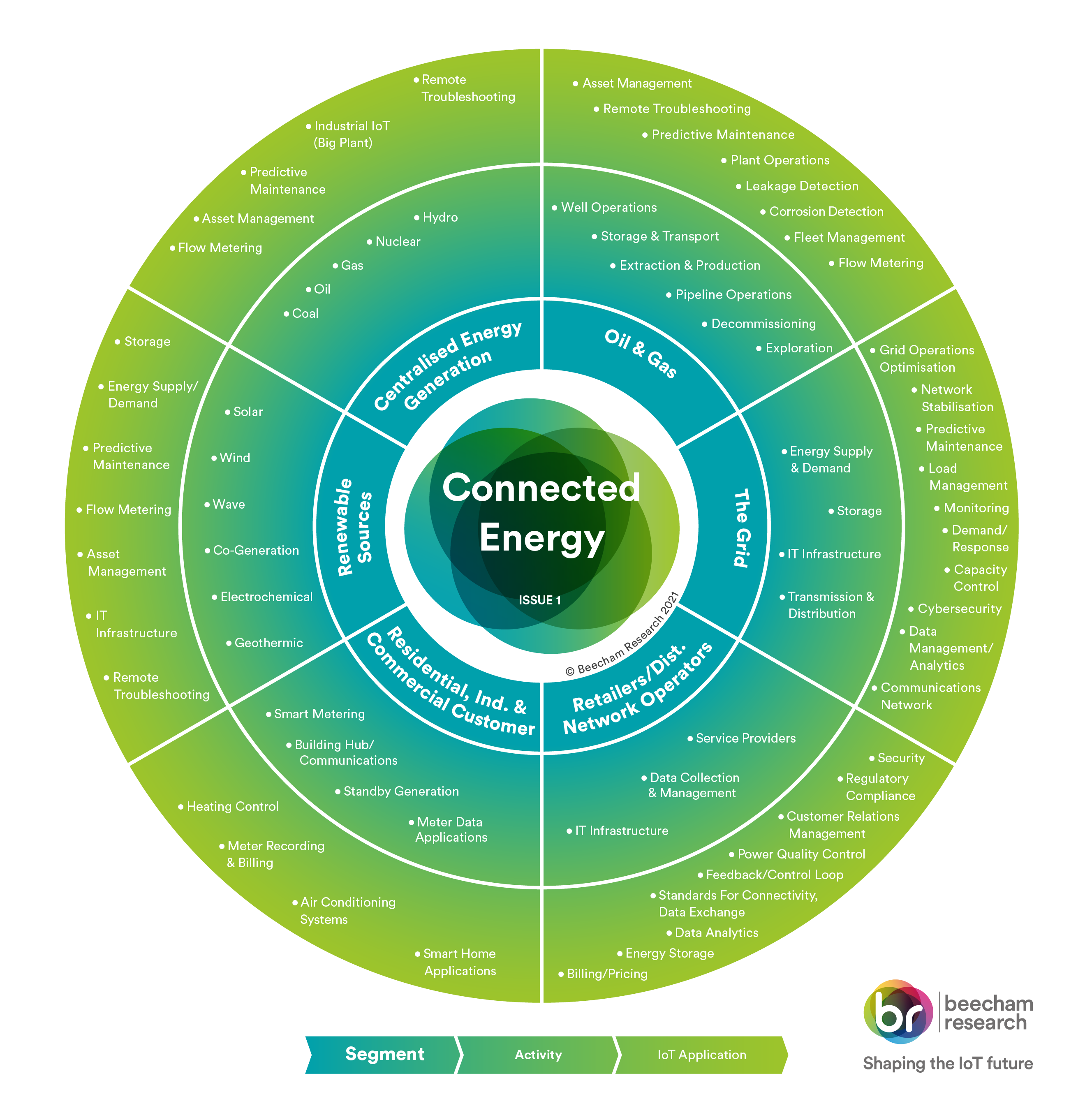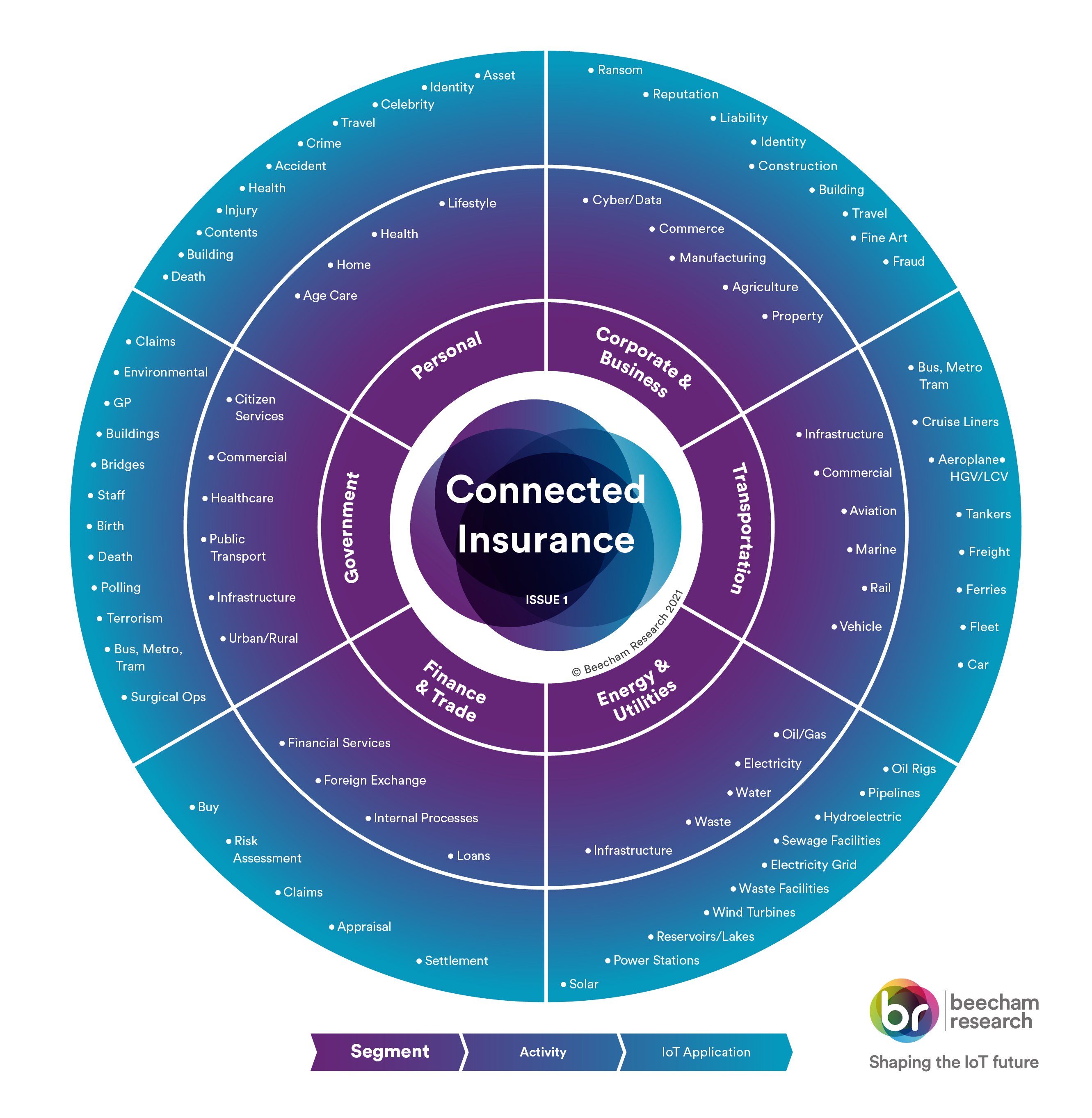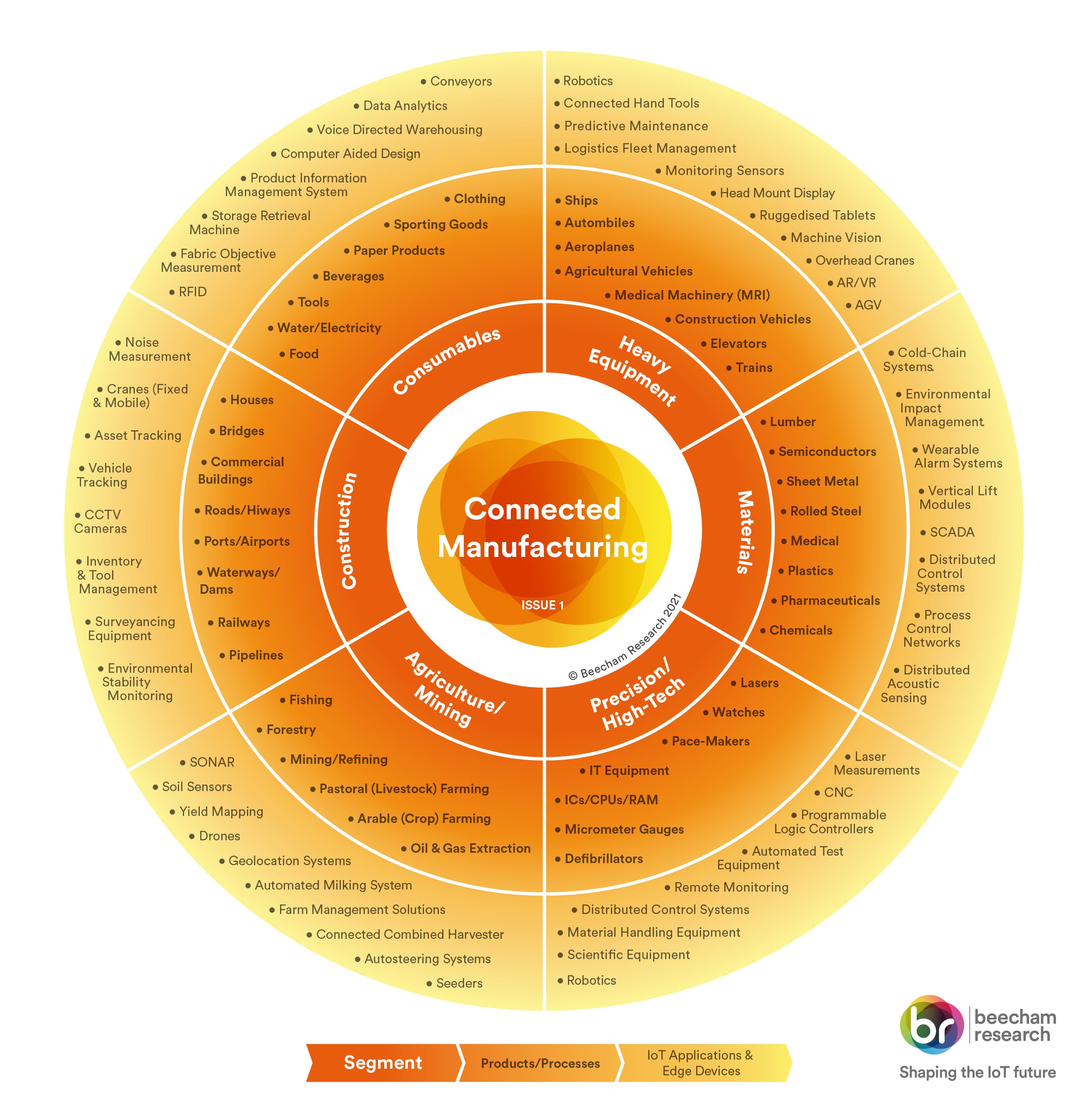Connected Healthcare Sector Chart
In this chart, the inner layer highlights 6 key segments of operational activity within the healthcare sector. They are also closely related to a patient’s treatment journey through the healthcare system, with each segment providing data for the patient’s EMR (Electronic Medical Record). The middle layer indicates the types of activities in each segment with the outer layer then showing examples of the IoT applications for each segment. As a result, the chart provides a cross-reference between operational activities and IoT applications in the healthcare sector.
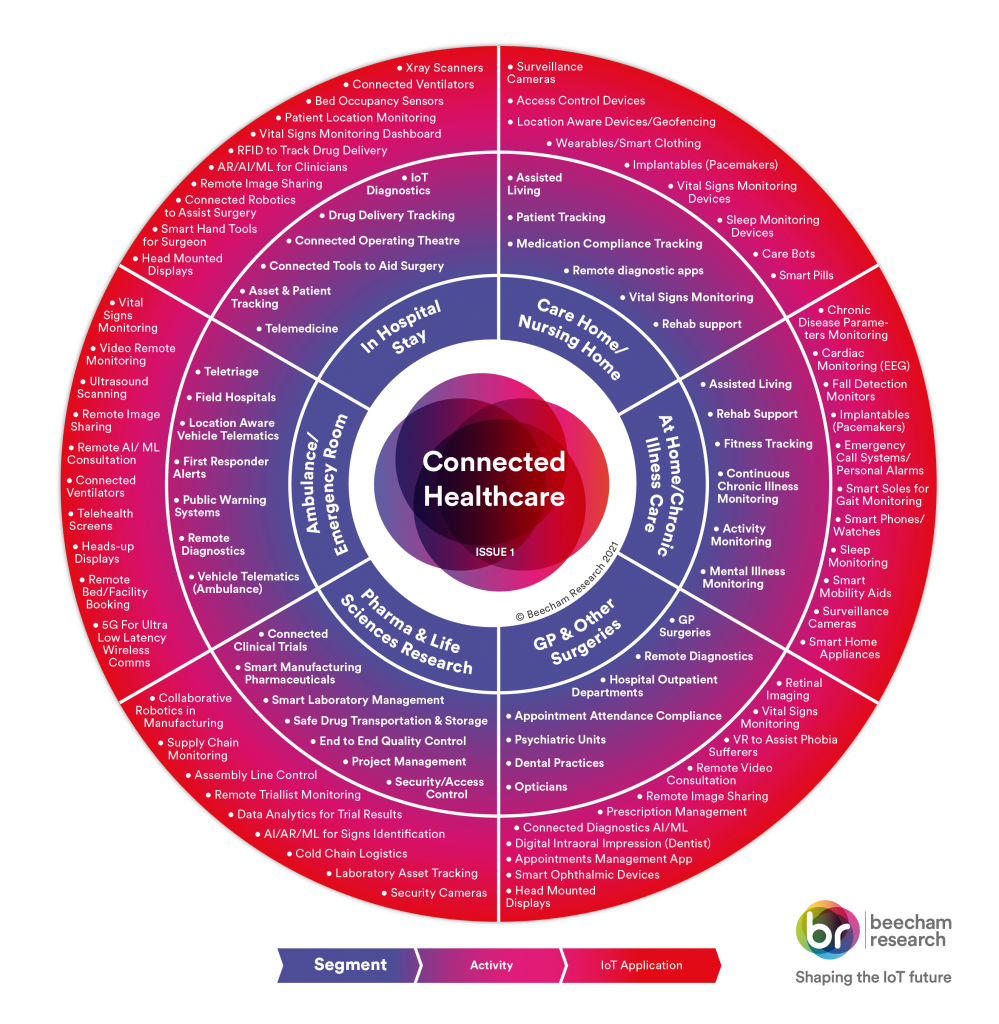
The main ways where connected medical devices impact on healthcare are:
- Decreased costs
- Improved diagnosis and treatment
- Improved disease management
- Remote monitoring of chronic diseases
- Enhanced patient experience
- Improving drug management
Care monitoring can be continuous or periodic. Continuous monitoring is utilised in intensive care and involves large volumes of data in total, necessitating advanced data management policies and alarm management. On the other hand, periodic monitoring transmits low data volumes in wide intervals. Networked medical devices then make it possible to transmit data, wherever the patient is, in order to:
- Prepare the next treatment steps
- Provide necessary resources
- Monitor the patient’s condition in transit and remotely respond to it
- Automatically create any documentation required
In these ways, connected healthcare made possible through ubiquitous connected medical devices will help transition healthcare towards a preventive and outcome-based approach.

